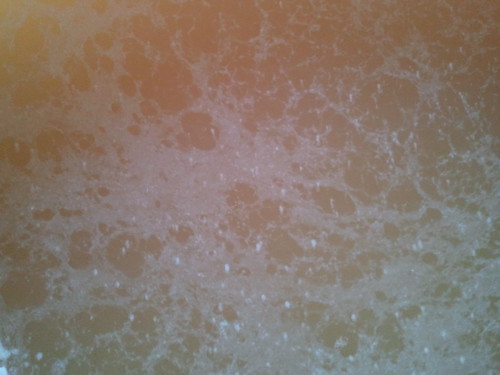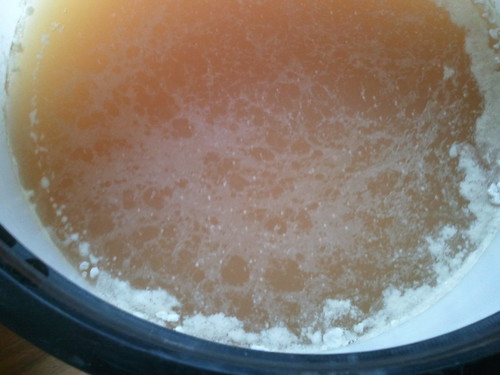Ovidsmuse
Well-Known Member
Thought I'd start a thread about my first wild beer in the Bay Area, Mountain View to be exact, in case anyone else in the area was interested. The base wort was really simple, to make sure the yeast and bacteria flavors were dominant.
10lbs Pale Male
1oz Chinook in the mash
.5oz Chinook in a 15 minuet boil
No wort chiller used, just let the pot sit out over night covered with a clean pillow case. After it had cooled to 100F I racked it to an old bottling bucket and left it covered again with a pillow case till the following evening then moved it inside till the temperature stabilized at 65F. At this point there was Krausen already. I had to leave the next day, and while I was gone things got cold, when it had stalled. I've warmed it back up hoping it will start again. What little fermentation that happened (1.051 down to 1.040) left the beer smelling and tasting like spicy apricots, so that is very encouraging. Here are some picks from before taking the sample and warming the beer up again.


10lbs Pale Male
1oz Chinook in the mash
.5oz Chinook in a 15 minuet boil
No wort chiller used, just let the pot sit out over night covered with a clean pillow case. After it had cooled to 100F I racked it to an old bottling bucket and left it covered again with a pillow case till the following evening then moved it inside till the temperature stabilized at 65F. At this point there was Krausen already. I had to leave the next day, and while I was gone things got cold, when it had stalled. I've warmed it back up hoping it will start again. What little fermentation that happened (1.051 down to 1.040) left the beer smelling and tasting like spicy apricots, so that is very encouraging. Here are some picks from before taking the sample and warming the beer up again.




